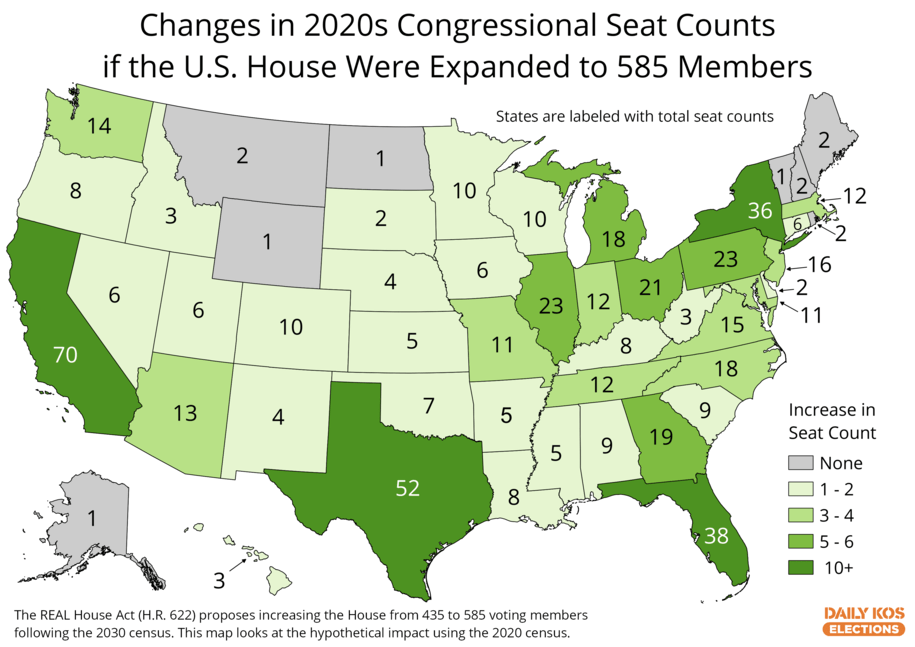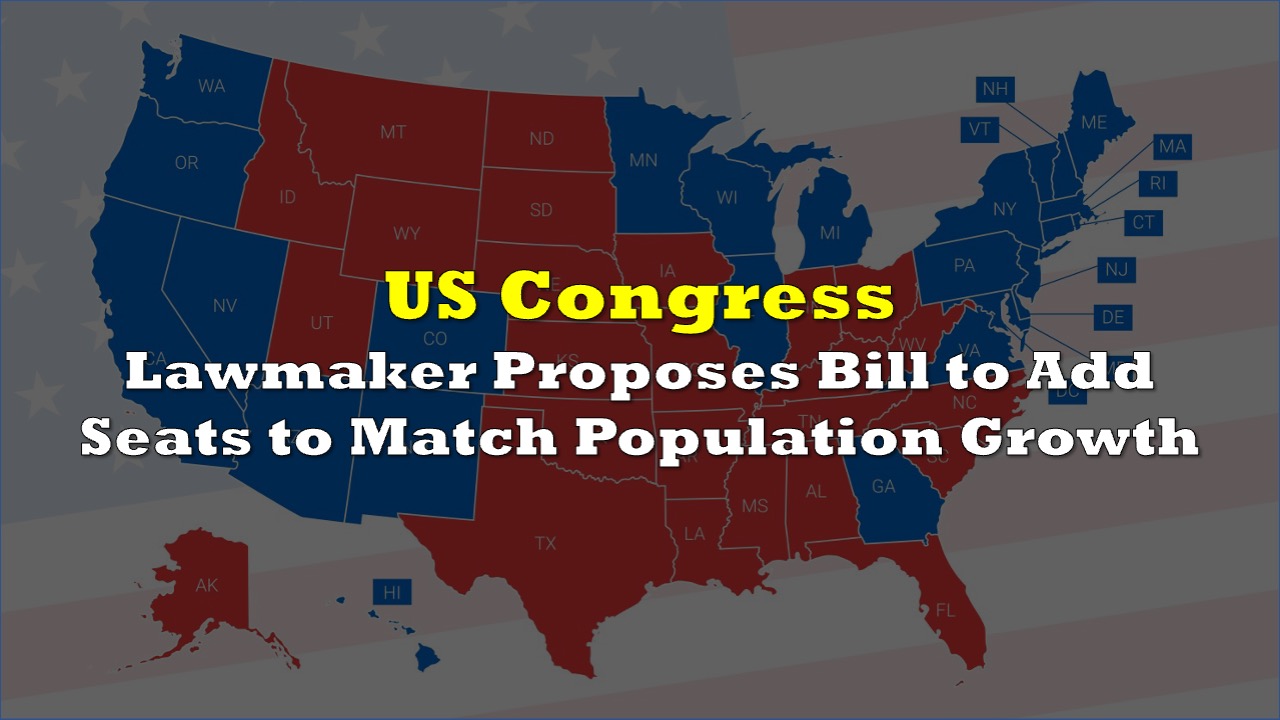It’s long been claimed that the members of the House of Representatives no longer effectively represent their constituents — the numbers simply no longer work. The last time Congress updated the number of seats was in 1913, meaning we’ve had 435 lawmakers sitting in Congress for 110 years, while the population of the United States has nearly tripled since.
This is something Democratic Representative Earl Blumenauer of Oregon is attempting to address with a new bill, the Restoring Equal and Accountable Legislators in the House (REAL House) Act. The bill seeks to reduce the number of constituents per lawmaker, which is now at an average of 800,000 for each member of Congress, by adding 149 new Congressional districts following the 2030 Census.
NEW: The U.S. House has had 435 members for over a century despite the population nearly quadrupling since 1910, but a new bill would expand it to 585 after 2030.
— Stephen Wolf (@PoliticsWolf) February 6, 2023
The map below shows how many more seats each state would have if the House had 585 today https://t.co/fPCJ5KSL8U pic.twitter.com/gV9HFQHXlq
“If Congress fails to act, by 2050 each member of Congress is on track to represent more than [a] million people,” Blumenauer warned in his statement. “This growing imbalance makes it more difficult for members to be responsive to the will of the people, and voters are more likely to sit out elections when their voice and input are not fully represented in government.”
Blumenauer also emphasized that the disproportionate size of the average Congressional district, which he says was due to an “artificial cap” that was put in place in 1929, has a more “insidious effect,” which is what many have warned of and called out before as, “an unrepresentative Electoral College.”
“As the disparity between the largest and smallest states widens, the votes of those in larger states matter less and less,” he explained. Smaller districts will give voters more opportunities to increase political diversity.
The sheer heft of Congressional districts also acts as an obstruction to the services and benefits that constituents are entitled to and when they’re entitled to receive them. This reality was underscored during the Covid-19 pandemic, according to Blumenauer. With smaller districts, the chances of underserving constituents also become smaller.
The lawmaker arrived at the 149 number “to match the number of seats that have moved between states since the 435 cap was enacted” and added one more to keep the total an odd number.
Of course, there are disadvantages to a larger Congress, adding more members to the already wildly gerrymandering House may be like adding more fuel to the fire, and then of course there’s the actual financial cost of having 149 more seats in the House, but the proposal’s benefits likely offset its dangers.
If passed, the change will not take effect until after the 2030 census.

The Daily Kos‘s Stephen Wolf whose tweet appears above created an estimate, based on the 2020 census, on how the change will impact the US. The states that will see the biggest changes or the most number of new congressional districts are California, Texas, Florida, and New York, with an additional 15, 14, 9, and 7, additional seats each, respectively.
Information for this story was found via Blumenauer.house.gov, Congress.gov, The Daily Kos, and the sources and companies mentioned. The author has no securities or affiliations related to this organization. Not a recommendation to buy or sell. Always do additional research and consult a professional before purchasing a security. The author holds no licenses.









